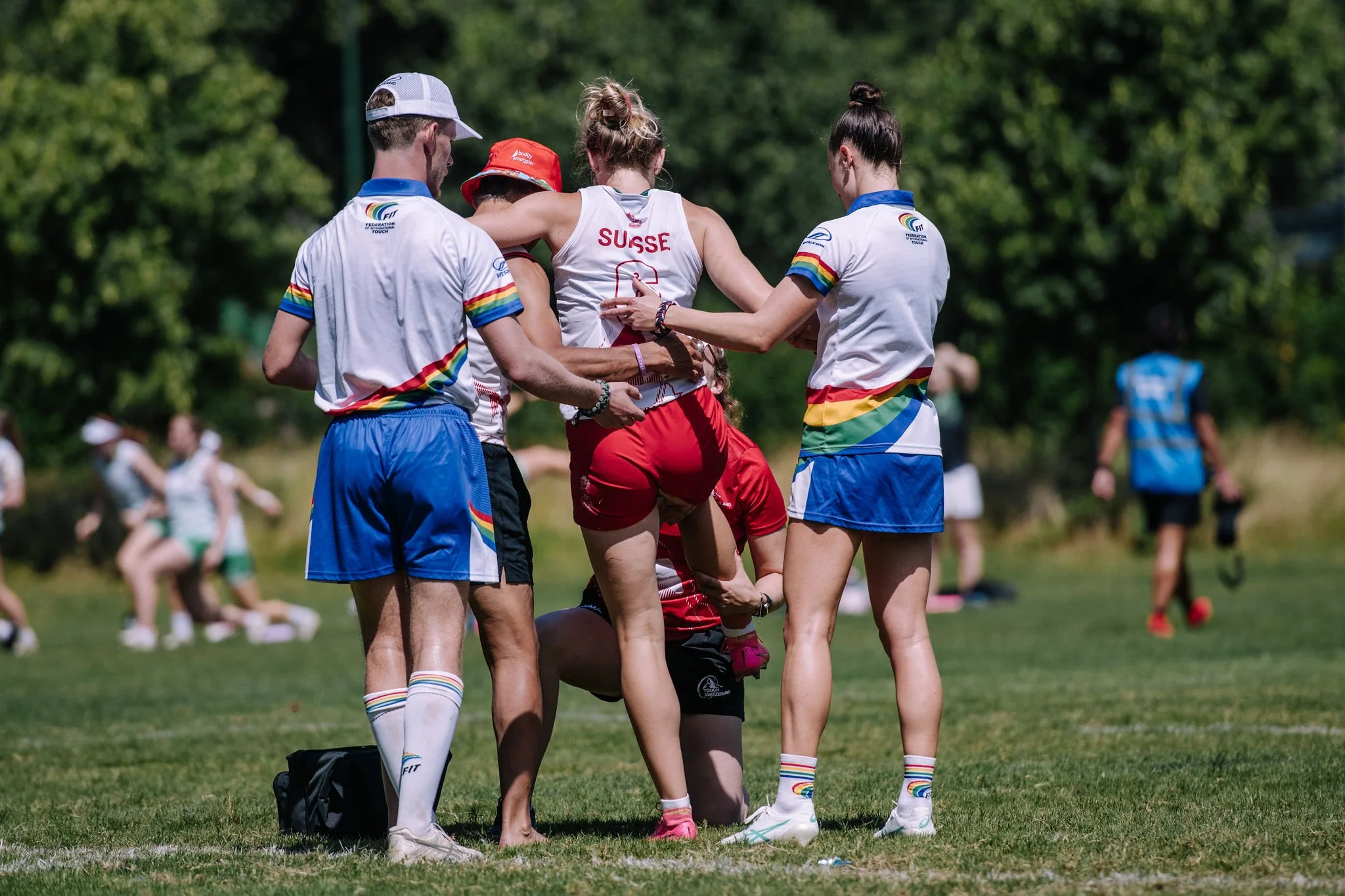Overcoming the Setback
My ACL Reconstruction and Recovery Journey
As a physiotherapist running my own clinic in the Swiss Alps, I work with many patients recovering from ACL injuries - especially from skiing. Yet nothing compares to experiencing it yourself. My ACL reconstruction journey gave me a whole new perspective: not just on the physical challenges, but also on the mental and emotional aspects of recovery. It’s this first-hand experience, combined with the latest research in ACL rehabilitation, that now equips me to guide my patients even more effectively.
The Injury: When Sport Takes a Turn
My journey began during the Touch Rugby World Cup 2024 in Nottingham, UK, when I felt a sharp pop in my knee while pivoting. Diagnosis: a complete ACL tear. For athletes hoping to return to high-level sport, surgery is often necessary, and I chose reconstruction using my own hamstring tendon, combined with a lateral reinforcement to improve rotational stability - a procedure well-supported by research.
Phase 1: Surgery and Early Recovery
The surgery itself was just the start. Early recovery is crucial for long-term outcomes. In the first couple of weeks, the focus is on managing swelling and avoiding overloading the knee, such as standing or walking too much. Swelling, discomfort, and restricted mobility are all normal post-operative symptoms, and the priority during this time is to allow the knee to settle while gently encouraging movement. I was determined to approach rehabilitation as I would with a patient - methodically and consistently.
Early physiotherapy focused on:
Managing pain and swelling: Using ice, elevation, compression, and gentle movement strategies.
Restoring range of motion: Ensuring the knee maintains gentle mobility to prevent stiffness.
Muscle activation: Beginning quadriceps activation exercises immediately to help regain full knee extension and avoid quadriceps inhibition.
One element I want to emphasise, based on research and personal experience, is the importance of starting early knee extension exercises on the knee extension machine. This is critical for regaining quadriceps strength and function, and studies show that when done with guidance, it does not increase the risk to the reconstructed ligament.
Phase 2: Consistency, Intensity, and Strength
Recovery is not just about doing the exercises - it’s about doing them consistently and at the right intensity. I committed to gym sessions 3 times per week, progressively building strength in my quads, hamstrings, glutes, and calves. Some days, it meant sacrificing other activities, but consistency is where real progress happens. And it was important to push myself - if an exercise felt easy, it wasn’t enough. You have to challenge yourself safely.
Balance and proprioception work were also key. The role of the ACL is to provide stability to the knee joint, and these exercises help the new ligament learn to take on that role again - laying the groundwork for sport-specific movements.
Phase 3: Returning to Sport - The Mental Shift
Once strength and stability were rebuilt, I began incorporating agility drills, acceleration and deceleration work, change of direction training, and jumping and landing exercises. These advanced drills were designed to restore confidence and prepare my knee for the physical demands of sport.
A real turning point came when I rejoined team training. Even 5–10 minutes on the field without thinking about my knee was transformative. For me, this highlighted how mental confidence is as important as physical recovery.
Throughout this phase, I also learned the importance of rest, sleep, and nutrition. Recovery is just as important as training - overload without rest is counterproductive.
The Ups and Downs: Expect the Unexpected
ACL recovery is rarely linear. Some days felt great, others frustrating. It’s crucial not to compare yourself too much to others - everyone’s journey is different, especially when balancing work, family, and life events. While research suggests a return to sport around 9–12 months, the reality is often longer and requires patience and hard work.
Phase 4: Safe Return to Play
Proper return-to-training and return-to-play testing is essential. This includes objective measures of strength, function, and movement quality - ensuring the knee can handle the demands of sport safely. This is where science meets practice, and my experience helps me guide patients through this critical stage.
Key Takeaways
Consistency and intensity matter: Show up regularly and push yourself within safe limits.
Early quadriceps work is essential: Knee extension exercises are critical for function and long-term outcomes.
Mental resilience counts: Returning to team training helped me trust my knee again.
Rest and recovery are part of the process: Sleep, nutrition, and active recovery are as important as gym sessions.
Expect ups and downs: Progress is rarely linear - patience is vital.
Individual timelines: Don’t stress about hitting generic return-to-sport milestones; focus on readiness.
Professional guidance plus personal insight: Experiencing this injury myself has made me a better physiotherapist, equipped to support patients through all aspects of recovery.
My ACL reconstruction journey reinforced that with determination, evidence-based rehabilitation, and professional support, recovery is entirely achievable. It’s taught me lessons I now bring to every patient, from skiing enthusiasts to team sport athletes, guiding them to regain strength, confidence, and performance safely.


